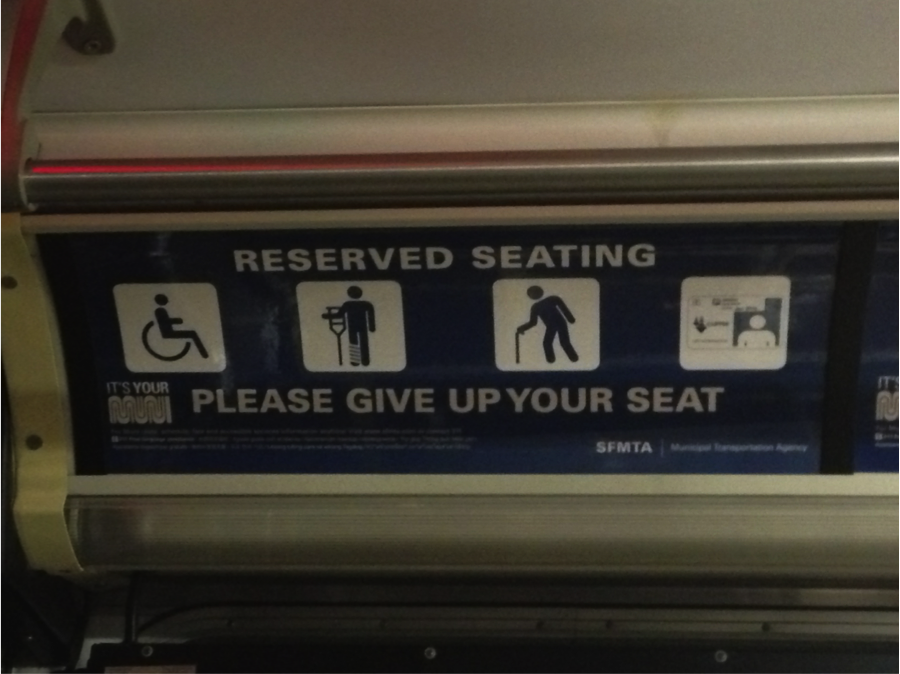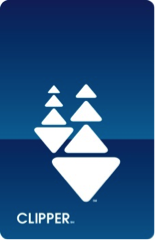
My whole life, I've seen signs similar to this one in buses, trains, and other forms of public transportation, but accompanied only by the first image -- the stick figure in the wheelchair, representing the universal symbol for "handicapped" or "disabled," often seen in parking lots and pointing out accessible ramps and paths all over the world. Recently, more of these signs have incorporated the second and third images as well, symbolizing those who are temporarily injured or senior citizens, respectively. Unfortunately, there isn't a known symbol for invisible disabilities, where the pain is present but not transparent to outsiders, so people like me have been victim to some pretty terrible discrimination on public transportation.
Recently, I saw the sign above, requesting that bus riders give up their seat for any of the four types of people represented in the four images: the disabled, injured, seniors, and anyone carrying the special Regional Transit Connection (RTC) Clipper Card.
For those of you who aren't from the Bay Area or just aren't familiar with public transportation here, a Clipper Card is used by individuals to seamlessly pay for bus fare, light rail, trains, underground transit, ferry rides, etc. (basically, any form of public transportation in/around the Bay Area...and we have a lot of those.) RTC Clipper Cards can be used by individuals with proper proof of disability (such as a handicapped parking placard) and must be purchased at a special location in downtown San Francisco. Unlike the standard cards, which are blue and identifiable as different from each other only by the numeric code on the back, RTC Clipper cards are white and include an identifying photo of the card's owner.
This is what a standard Clipper card looks like:

And this is an RTC Clipper card:

See? They are very different. In fact, the only commonality is the Clipper logo. Other than that, the layout and content are totally different.
Unfortunately, many people -- including MUNI police and bus operators -- still don't seem to know what the RTC cards are, and squint at them like they've never seen one before when checking to see that I've paid my fare. I've seen other riders look over at me during these moments with accusatory glances, like I've forged a fake card or am trying to pay with an ID.
The sign I saw with the four images a great first step. Sadly, I've only seen it the one time, but I'm hopeful that it will quickly become more prevalent. Assuming it does, it shouldn't be long before I no longer have to deal with ableist individuals who tell me that I don't deserve a seat in the front of the bus -- or at all. I will be able to simply present them with my RTC and point to the sign as proof that I do, in fact, have a right to sit down. In the meantime, I'll be writing to SFMTA asking why I haven't seen more signs depicting the seemingly rare RTC.